Marvel at the miniature world of sweat bees as we explore their unique adaptations, including the unexpected existence of a 'tongue'.

Do Sweat Bees Have Tongues
Have you ever wondered if sweat bees have tongues? You might be surprised to learn that these minuscule insects possess an organ similar to what we'd refer to as a 'tongue'.
As you venture into this intriguing topic, you'll discover the unique and impressive ways these tiny creatures use their 'tongues', not just for feeding, but for survival in their microscopic world.
You're on the brink of unravelling some unexpected facts and, trust me, it's going to change the way you perceive these fascinating insects forever.
Key Takeaways
- Sweat bees have a proboscis, which is a long, flexible tube used for sipping nectar and gathering sweat for a salty snack.
- The tongue of a sweat bee, called the glossa, is long, slender, and capable of moving in and out. It is coated in tiny hairs that help gather nectar.
- Sweat bee tongues have multiple functions, including feeding, communication and food exchange with other bees, grooming themselves and their hive mates, and manipulating wax for nest building and repair.
- Sweat bees are not always attracted to sweat, but also feed on pollen and nectar. They are among the world's smallest bees and can have iridescent greens and blues. Their stings are less painful than mosquito bites, and they are solitary creatures, with each female making her own nest.
Understanding Sweat Bees
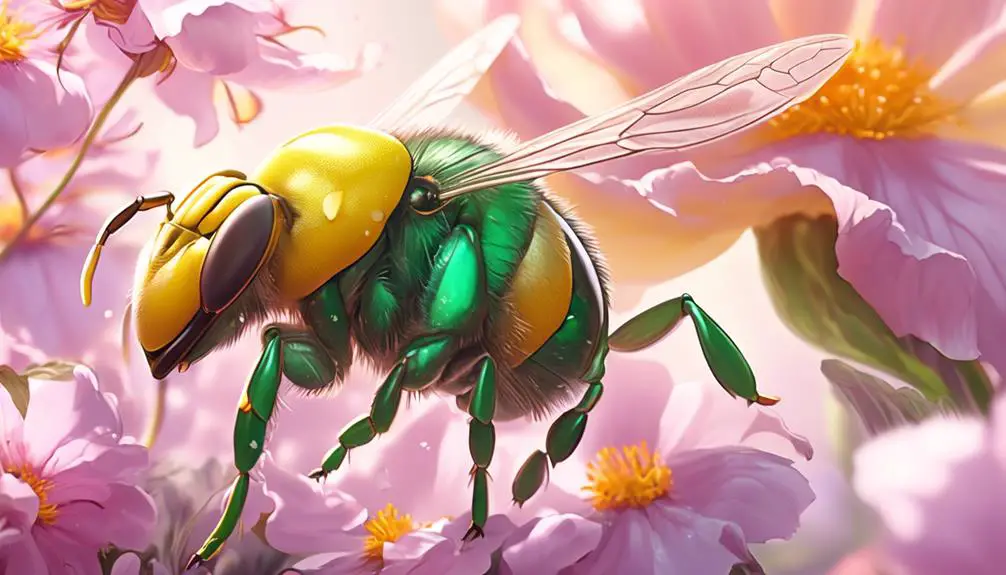
Let's dive right into understanding sweat bees, fascinating creatures that may be buzzing around your garden. They're tiny, usually less than half an inch in size, and they're generally harmless. You'll find them in a diverse range of colors: some are metallic green or blue, while others are dark and dull. Sweat bees got their name due to their peculiar attraction to human sweat. It's not that they're drawn to your gym stench, but they seek the salt in your sweat.
Now, don't be quick to swat them away. Most species are solitary, living in small burrows in the ground, and they play a crucial role in your garden. They're diligent pollinators, helping your flowers and plants to thrive.
If you're fretting about a sting, here's a comforting fact. While they can sting, they're not aggressive. Only females have stingers, and they'll only use them if they feel threatened. The sting is less painful than a mosquito bite, so you're in safe hands around sweat bees.
Embrace these tiny garden helpers, and you'll see your green space flourish.
Anatomical Features of Sweat Bees
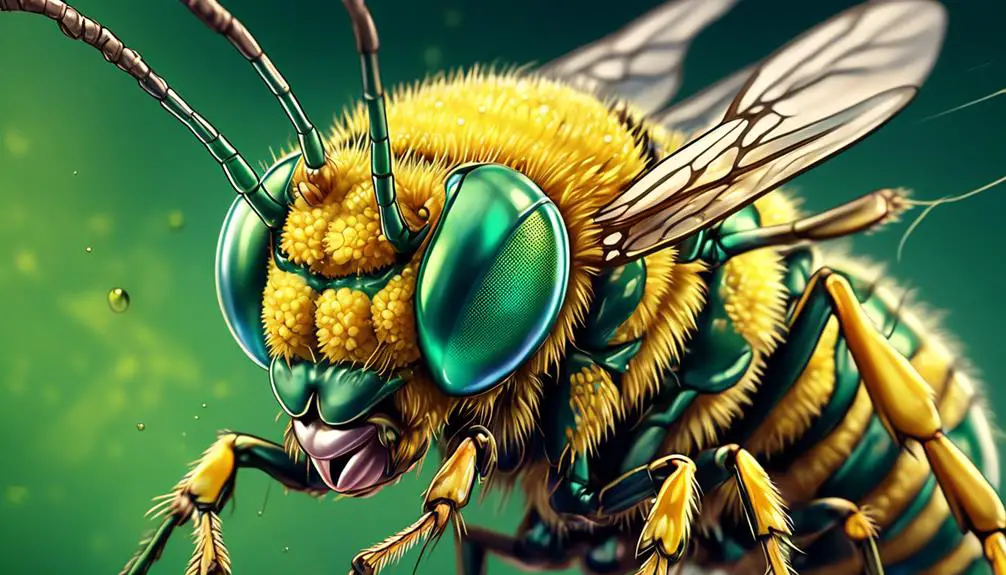
Now, delve into the intriguing world of sweat bees' anatomy, where even their smallest features play a significant role in their survival. These fascinating insects possess certain characteristics that not only give them their namesake but also aid in their day-to-day existence.
Here's a quick rundown of their special traits:
- Body Size and Color: Sweat bees are small, ranging from 1/8 to 1/2 inches long. They come in a wide array of colors, from metallic green or blue to dull brown.
- Antennae: Like all bees, sweat bees have two antennae that serve as their primary sensory organs.
- Proboscis: Yes, sweat bees do have tongues! It's a long, flexible tube called a proboscis, used for sipping nectar from flowers and, occasionally, your sweat!
- Stinger: Only female sweat bees have stingers. Though their sting is mild, it's their defense mechanism when they feel threatened.
The Tongue of a Sweat Bee
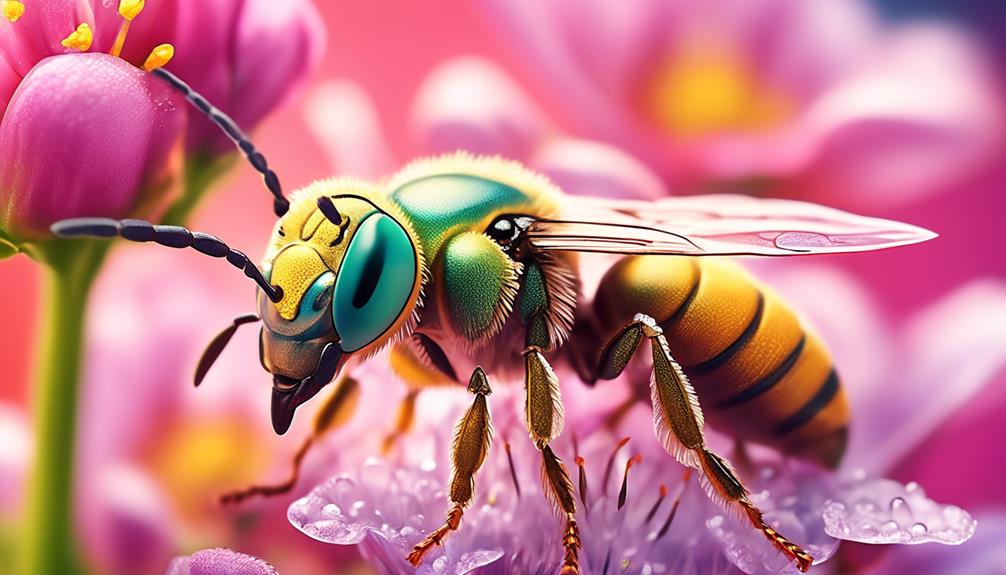
Having explored the general anatomical features of sweat bees, you're probably curious to learn more about their unusual proboscis, or tongue. This organ is an extension of their mouth, designed for feeding on nectar and pollen. As small as they are, sweat bees have a specialized, elongated tongue that allows them to reach into deep flowers.
It's not the same as your tongue, though. Their proboscis is actually a complex structure made up of several parts, including the glossa, which is the part that's most like a tongue. It's long, slender, and capable of moving in and out. It's coated in tiny hairs that help the bee gather nectar, much like how your taste buds help you taste food.
This proboscis also has another purpose. When a sweat bee lands on your skin and you feel a prick, that's not a sting. It's the bee using its proboscis to lap up your sweat, hence their name. So the next time you're out in the garden and a sweat bee lands on you, remember, it's just there for a salty snack.
Functionality of Sweat Bee Tongues
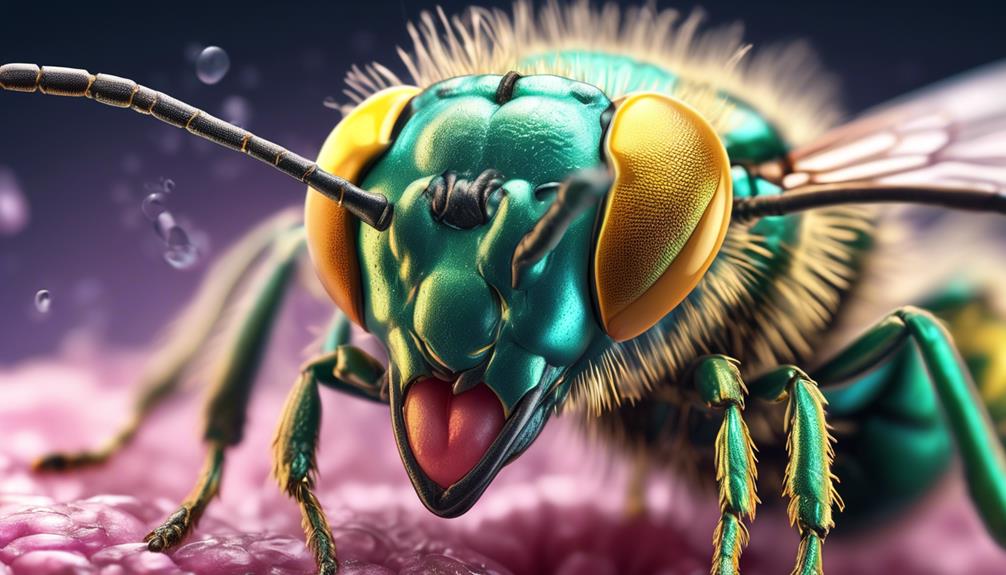
You might wonder how a sweat bee's tongue, or proboscis, functions in its daily activities. It's not merely a tool for licking up your perspiration on a hot summer day. This unique organ has a lot more going on than you'd initially think.
The proboscis, although it might seem insignificant, is integral to their survival. It helps sweat bees:
- Feed: The tongue is used to lap up nectar from flowers and sweat from animals. It's their primary source of nutrition.
- Communicate: Just like ants, sweat bees use their tongues to exchange food and signals with each other.
- Clean: They use their tongues to groom themselves and their hive mates, maintaining hygiene.
- Build: They even use it to manipulate wax for building and repairing their nests.
Fascinating Facts About Sweat Bees
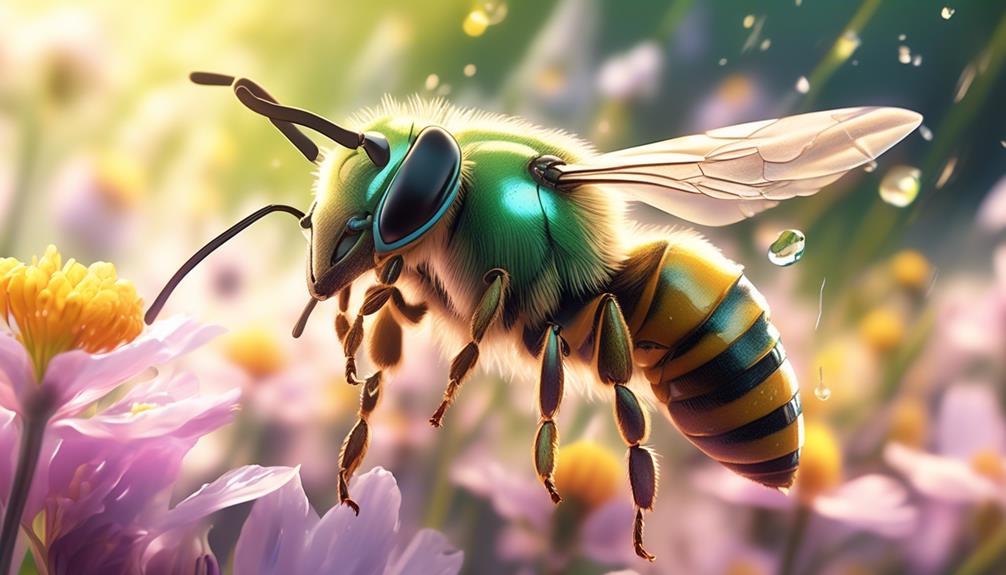
Diving deeper into the world of sweat bees, there's a treasure trove of fascinating facts that might just make you see these tiny creatures in a whole new light. Despite their name, sweat bees aren't always attracted to sweat. They're pollen and nectar feeders, but they'll also land on you to lick up salty sweat when minerals are scarce.
You'll be amazed to learn that sweat bees are among the world's smallest bees. They're often mistaken for flies due to their size and metallic coloration. In fact, some species shimmer in iridescent greens and blues, making them quite a sight to behold.
Now, you might be wondering about their sting. Yes, sweat bees can sting but it's usually less painful than a mosquito bite. Females are the ones who sting, but they're generally non-aggressive. They'd rather go about their business of pollination than bother you.
Lastly, sweat bees are solitary creatures. Unlike honey bees, they don't live in large colonies. Every female is fertile and makes her own nest. So next time you see a sweat bee, remember there's more to these tiny critters than meets the eye.
Conclusion
So, you've learned a lot about sweat bees, haven't you? Yes, they do have tongues, tiny ones designed for lapping up your sweat or deriving nectar from flowers.
These fascinating creatures use their tongues not only for nourishment but also to build their nests. Isn't nature amazing?
Keep exploring and continue to uncover the hidden wonders of the small but captivating world of insects.


